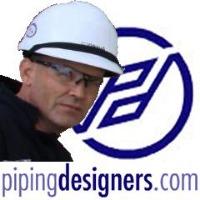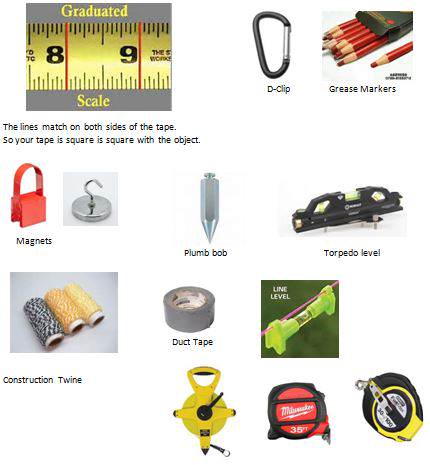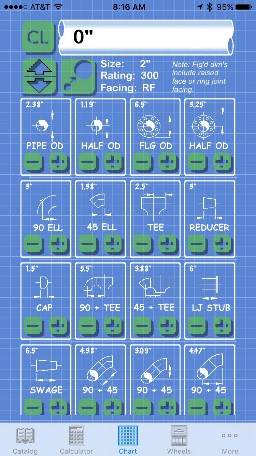The integrity of a piping system depends on the considerations and principles used in design, construction and maintenance of the system.
Piping systems are made of many components as pipes, flanges, supports, gaskets, bolts, valves, strainers, flexibles and expansion joints.
The components can be made in a variety of materials, in different types and sizes and may be manufactured to common national standards or according a manufacturers proprietary item.
Some companies even publish their own internal piping standards based upon national and industry sector standards.
Piping codes and standards from standardization organizations as ANSI, ASME, ISO, DIN and others, are the most common used in pipes and piping systems specifications.
The difference between piping codes and piping standards can be defined as:
Piping Standards
Piping standards define application design and construction rules and requirements for piping components as flanges, elbows, tees, valves etc.
A standard has a limited scope defined by the standard.
Piping Codes
Piping codes define the requirements of engineering, design, fabrication, use of materials, tests and inspection of pipes and piping systems.
Each code has a limited jurisdiction defined by the scope of the code.
The links provided here are internet web sites for additional information available at the time of the creation of this listing (20Mar2014)
B31.1 - Power Piping
(http://pbadupws.nrc.gov/docs/ML0314/ML031470592.pdf)
This code contains requirements for piping systems typically found in electric power generating stations, industrial institutional plants, geothermal heating systems, and heating and cooling systems.
B31.2 – Fuel Gas Piping
(http://engineers.ihs.com/document/abstract/WCSHCAAAAAAAAAAA)
This has been withdrawn as a National Standard and replaced by ANSI/NFPA Z223.1, but B31.2 is still available from ASME and is a good reference for the design of gas piping systems (from the meter to the appliance).(1)
B31.3 - Process Piping
(http://global.ihs.com/piping.cfm?RID=Z56&MID=5280&gclid=CK6rjPajor0CFYc7OgodtDwAng)
This Code contains requirements for piping typically found in petroleum refineries; chemical, pharmaceutical, textile, paper, semiconductor, & cryogenic plants, & related processing plant terminals
B31.4 - Pipeline Transportation Systems for Liquid Hydrocarbons and Other Liquids
(http://cstools.asme.org/csconnect/pdf/ANSI/BSR8/PublicReviewDraft1310.pdf)
This Code contains requirements for piping transporting crude oil, natural gas liquids, liquefied petroleum products and other liquids between natural gas plants, refineries, and other facilities.
B31.5 - Refrigeration Piping and Heat Transfer Components
(https://www.asme.org/products/codes-standards/b315-2010-refrigeration-piping-heat-transfer)
This Code contains requirements for the materials, design, fabrication, assembly, erection, test and inspection of refrigerant, heat transfer components & secondary coolant piping for temperatures as low as -320°F (-196°C).
B31.8 - Gas Transmission and Distribution Piping Systems
This Code contains information on the design, fabrication, installation, inspection, testing, and safety aspects of operation and maintenance of pipeline facilities used for the transportation of hydrocarbon gases.
B31.12 – Hydrogen Piping and Pipelines
(https://www.asme.org/products/codes-standards/hydrogen-piping-and-pipelines)
This Code contains information on the design, fabrication, installation, inspection, testing, and safety aspects of operation and maintenance of piping and pipeline facilities used for the transportation of Hydrogen gas.
Notes:
(1) This Code covered the design, fabrication, installation, and testing of piping systems for fuel gases such as natural gas, manufactured gas, liquefied petroleum gas (LPG)-air mixtures above the upper combustible limit, liquefied petroleum gas (LPG) in the gaseous phase, or mixtures of these gases.
Included within the scope of this Code is fuel gas piping systems both in buildings and between buildings, from the outlet of the consumer's meter set assembly (or point of delivery) to and including the first pressure containing valve upstream of the gas utilization device.
About the Author
{cb:Anton Dooley is a Piper with 30 years experience covering process plant engineering, design & training. He is the founder of pipingdesigners.com} |





